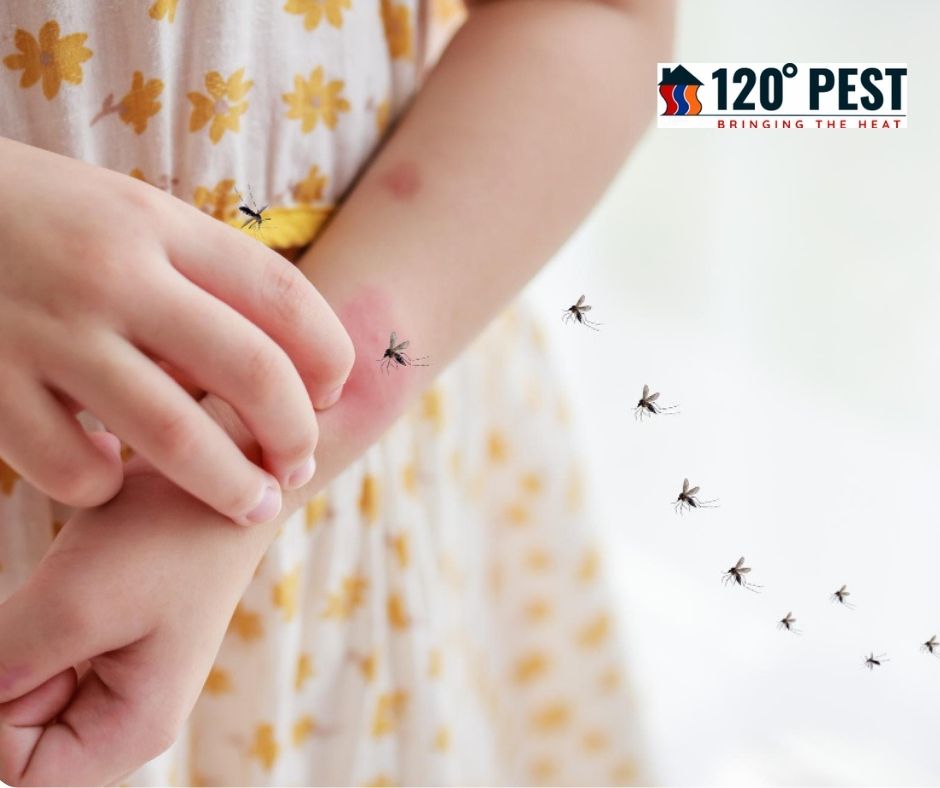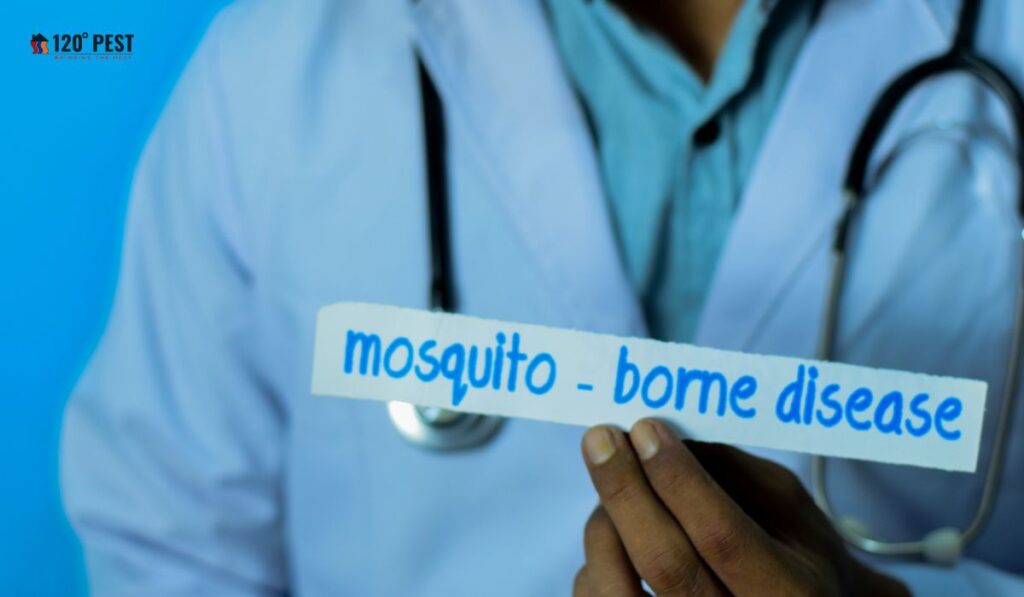Mosquito-borne diseases pose a significant threat to global public health, causing millions of illnesses and deaths annually. These diseases are transmitted through the bite of infected mosquitoes and are prevalent in various parts of the world, particularly in tropical and subtropical regions. Understanding the nature of these diseases, their transmission, and their impact is crucial for effective prevention and control measures.
The Scope of Mosquito-Borne Diseases:
Mosquito-borne diseases encompass a wide range of illnesses caused by pathogens transmitted through the bite of infected mosquitoes. These diseases pose a significant global health burden, affecting millions of people each year and causing substantial morbidity and mortality. The most common pathogens responsible for these diseases include viruses, parasites, and bacteria, each with its distinct set of symptoms and complications.
Among the most prevalent and deadly mosquito-borne diseases is malaria, caused by Plasmodium parasites. Malaria remains a leading cause of illness and death worldwide, particularly in sub-Saharan Africa, where transmission rates are highest. The disease manifests with symptoms such as fever, chills, and flu-like symptoms, and if left untreated, it can progress to severe complications, including organ failure and death.
Dengue fever, transmitted by Aedes mosquitoes, is another significant public health concern, affecting millions of people annually in tropical and subtropical regions. The disease presents with a spectrum of symptoms, ranging from mild fever and headache to severe hemorrhagic fever, which can be fatal if not promptly managed. Dengue outbreaks can overwhelm healthcare systems and place a considerable strain on resources, particularly in endemic regions.
Challenges Posed by Mosquito-Borne Diseases:
Mosquito-borne diseases present multifaceted challenges to public health systems and communities worldwide. One of the primary challenges is the rapid spread of these diseases, facilitated by factors such as urbanization, population growth, travel, and climate change. As mosquitoes adapt to changing environmental conditions, they expand their geographic range, increasing the risk of disease transmission to new areas. Urbanization, with its associated growth of informal settlements and inadequate infrastructure, creates breeding grounds for mosquitoes, heightening the risk of disease transmission in densely populated areas. Population growth further compounds this challenge, placing additional strain on healthcare systems and resources.
Climate change plays a significant role in the spread of mosquito-borne diseases by altering temperature and precipitation patterns, influencing mosquito breeding habitats, and extending the transmission season. Warmer temperatures can accelerate the replication of pathogens within mosquitoes and shorten the extrinsic incubation period, leading to increased transmission rates. Changes in rainfall patterns can create favorable conditions for mosquito breeding, exacerbating the risk of outbreaks in previously unaffected areas. The interconnected nature of these environmental factors underscores the need for adaptive strategies to mitigate the impact of climate change on disease transmission.
Impact on Global Health and Economy:
The impact of mosquito-borne diseases on global health and economies is profound, extending far beyond the immediate health consequences. These diseases contribute significantly to morbidity and mortality, particularly among vulnerable populations such as children, pregnant women, and the elderly. The burden of illness places strain on healthcare systems, hindering their ability to provide adequate care and leading to increased healthcare expenditures.
Furthermore, mosquito-borne diseases exert a considerable toll on economic development. The loss of productivity due to illness and disability reduces workforce participation and economic output in affected regions. Individuals suffering from mosquito-borne diseases may experience prolonged periods of illness, leading to absenteeism from work or school, further exacerbating economic losses. Moreover, the long-term effects of these diseases, such as chronic disability or cognitive impairment, can perpetuate the cycle of poverty by limiting individuals’ ability to participate in the workforce and access education opportunities.
Prevention and Control Strategies:
Preventing and controlling mosquito-borne diseases require a multifaceted and coordinated approach that addresses various aspects of disease transmission and management. Key strategies encompass vector control, community engagement, healthcare infrastructure enhancement, and research and innovation. By implementing these strategies effectively, it is possible to mitigate the impact of mosquito-borne diseases and reduce their burden on public health.
Vector Control:
Vector control is a fundamental aspect of preventing mosquito-borne diseases. This involves implementing measures to reduce mosquito breeding sites and minimize mosquito populations. Strategies include:
- Eliminating standing water where mosquitoes breed, such as in containers, gutters, and stagnant pools.
- Using insecticides to target mosquito larvae and adult mosquitoes in breeding sites and resting areas.
- Deploying mosquito nets and screens to prevent mosquito bites, particularly during peak biting times.
- Implementing environmental management practices, such as draining swamps and marshes, to reduce mosquito habitats.
Public Awareness and Education:
Public awareness and education play a crucial role in promoting preventive measures and changing behavior to reduce the risk of mosquito-borne diseases. Key components of this strategy include:
- Educating communities about the importance of personal protective measures, such as wearing long sleeves and using insect repellents, especially in areas with high mosquito activity.
- Raising awareness about the symptoms and transmission of mosquito-borne diseases to facilitate early detection and prompt treatment.
- Engaging community leaders, schools, and healthcare providers in disseminating information and promoting preventive behaviors.
- Utilizing mass media campaigns, social media, and community outreach programs to reach a wide audience and reinforce key messages.
Vaccination:
Vaccination is an essential tool for preventing certain mosquito-borne diseases where vaccines are available. Developing and deploying vaccines can significantly reduce disease transmission and the burden of illness. Key vaccination strategies include:
- Developing effective vaccines against mosquito-borne diseases, such as the malaria vaccine RTS,S/AS01 and the dengue vaccine Dengvaxia.
- Implementing vaccination campaigns targeting high-risk populations, such as children living in endemic areas and travelers to regions with ongoing outbreaks.
- Integrating vaccination programs with existing healthcare services to ensure widespread coverage and maximize impact.
- Conducting research to improve vaccine efficacy, safety, and accessibility, particularly in resource-limited settings.
Research and Innovation:
Investing in research and innovation is essential for developing new tools and technologies to prevent and control mosquito-borne diseases. Key areas of focus include:
- Developing novel vector control methods, such as genetically modified mosquitoes and Wolbachia-infected mosquitoes, to reduce mosquito populations and interrupt disease transmission.
- Advancing vaccine development efforts to target emerging threats and enhance vaccine effectiveness against existing pathogens.
- Improving diagnostic tests for rapid and accurate detection of mosquito-borne diseases, enabling early diagnosis and treatment.
- Harnessing technology, such as mobile applications and remote sensing, for disease surveillance, monitoring vector populations, and guiding control efforts.
International Collaboration:
Strengthening global partnerships and collaboration is essential for addressing the complex challenges posed by mosquito-borne diseases. Key aspects of international collaboration include:
- Facilitating knowledge sharing and capacity building among governments, international organizations, researchers, and healthcare providers.
- Coordinating efforts to enhance disease surveillance, response, and control across borders and regions.
- Leveraging resources and expertise to support endemic countries in implementing effective prevention and control measures.
- Promoting equity and access to essential tools and interventions, particularly for marginalized populations disproportionately affected by mosquito-borne diseases.
Conclusion
In conclusion, a comprehensive approach to preventing and controlling mosquito-borne diseases requires the integration of multiple strategies, including vector control, public awareness and education, vaccination, research and innovation, and international collaboration. By addressing the root causes of disease transmission and investing in evidence-based interventions, it is possible to reduce the burden of mosquito-borne diseases and improve public health outcomes worldwide. For further assistance in managing mosquito infestations and protecting your home or community, please contact us at 120 Pest Control.
FAQs
What are mosquito-borne diseases, and how are they transmitted?
Mosquito-borne diseases are illnesses caused by pathogens transmitted through the bite of infected mosquitoes. These pathogens include viruses, parasites, and bacteria, each with its set of symptoms and complications.
What are the most common mosquito-borne diseases, and where are they prevalent?
Malaria, dengue fever, Zika virus, chikungunya, and West Nile virus are among the most prevalent mosquito-borne diseases. They are particularly common in tropical and subtropical regions, where mosquito populations thrive.
What are the symptoms of mosquito-borne diseases, and how serious can they be?
Symptoms vary depending on the specific disease but can include fever, chills, headache, joint pain, rash, and in severe cases, organ failure or death. Mosquito-borne diseases can have a significant impact on both individual health and public health systems.
What factors contribute to the spread of mosquito-borne diseases?
Various factors contribute to the spread of these diseases, including urbanization, population growth, travel, climate change, and inadequate vector control measures. Changes in environmental conditions can create favorable breeding habitats for mosquitoes and extend their geographic range.
How do mosquito-borne diseases impact global health and economies?
Mosquito-borne diseases contribute to morbidity and mortality, particularly among vulnerable populations, and place a strain on healthcare systems. The economic impact is significant, leading to losses in productivity, increased healthcare expenditures, and perpetuating the cycle of poverty in affected regions.
What strategies are effective in preventing and controlling mosquito-borne diseases?
Effective strategies include vector control measures such as eliminating breeding sites, public awareness campaigns to promote preventive behaviors, vaccination where available, research and innovation for new tools and technologies, and international collaboration to address the complex challenges posed by these diseases.
How can individuals protect themselves from mosquito bites and reduce their risk of mosquito-borne diseases?
Individuals can protect themselves by using insect repellents, wearing long sleeves and pants, using mosquito nets, and avoiding outdoor activities during peak mosquito activity times. Additionally, staying informed about local disease risks and seeking prompt medical attention for any symptoms is essential.





